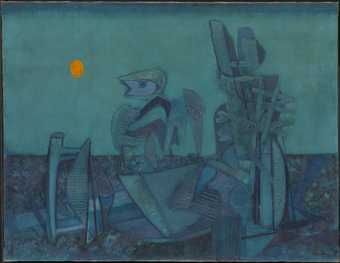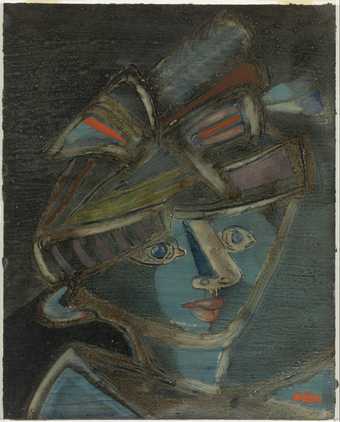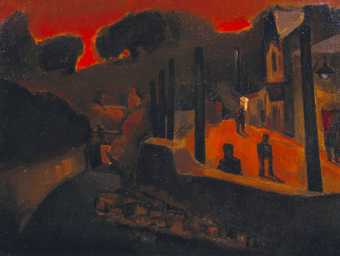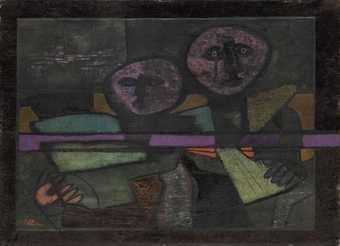
Not on display
- Artist
- Jankel Adler 1895–1949
- Medium
- Oil paint on canvas
- Dimensions
- Support: 864 × 1118 mm
frame: 1062 × 1309 × 75 mm - Collection
- Tate
- Acquisition
- Presented by Robert Strauss 1960
- Reference
- T00372
Display caption
As a Polish Jew and a socialist Adler was vulnerable to persecution when the Nazi party came to power in 1933 and he left Germany immediately. He worked in Warsaw and Paris before arriving in Britain with the Polish army. His experiences as a refugee and the first news of the concentration camps affected the work he made during the Second World War. The Mutilated was painted in London during heavy bombing. Adler said it reflected his admiration for ‘the behaviour of Londoners under great stress and suffering’. ‘Only then could humanity be seen at its best,’ he added.
Gallery label, April 2019
Does this text contain inaccurate information or language that you feel we should improve or change? We would like to hear from you.
Catalogue entry
T00372 The Mutilated 1942
Inscribed 'Adler' b.r. and 'JANKEL ADLER | LONDON W.8 | 77 BEDFORD GARDENS | "THE MUTILATED" 1942' on back of canvas
Oil on canvas, 34 x 44 (86.5 x 112)
Presented by Robert Strauss 1960
Prov: James Bomford, Aldbourne, Wilts.; Alfred Hecht, London; with Obelisk Gallery, London; Robert Strauss, London
Exh: Jankel Adler, Redfern Gallery, London, June-July 1943 (13); Memorial Exhibition of the Works of Jankel Adler 1895-1949, Arts Council, London, November-December 1951 (20); Jankel Adler, Obelisk Gallery, London, December 1958-January 1959 (3)
Repr: Studio, CXXVI, 1943, p. 91; Stanley William Hayter, Jankel Adler (London-Paris-Brussels 1948), pl.21 in colour and dated 1943; Anna Klapheck, Jankel Adler (Recklinghausen 1966), p.62 in colour
Painted while Adler was living in Bedford Gardens, London, in the same house as Robert Colquhoun, Robert MacBryde and John Minton. It illustrates his important influence on Colquhoun and MacBryde at this period.
James Bomford recalled discussing this painting with Adler. 'It was at the time of some heavy bombing of London and he was most impressed by the behaviour of Londoners when under great stress and suffering. It seemed to him that only then could humanity be seen at its best, and I am sure that something of this feeling influenced him when painting this picture' (letter of 31 May 1961).
Published in:
Ronald Alley, Catalogue of the Tate Gallery's Collection of Modern Art other than Works by British Artists, Tate Gallery and Sotheby Parke-Bernet, London 1981, pp.[1]-2, reproduced p.[1]
Explore
- emotions, concepts and ideas(16,416)
-
- emotions and human qualities(5,345)
-
- courage(56)
- military: World War II(1,269)
-
- World War II - non-specific(1,132)
- amputee(43)
- disability(51)
- wounded(135)
You might like
-
Jankel Adler No Man’s Land
1943 -
Jankel Adler Woman with Hat
1940 -
Josef Herman Evening, Ystradgynlais
1948 -
Jankel Adler Orphans
1941




